The Scroll Grass Pattern: A Cultural Code in Hanfu Design

Ⅰ. Overview
The Scroll Grass Pattern, a motif in Hanfu textile design, embodies China’s cultural heritage through its elegant botanical forms. Internationally recognized as the “karakusa pattern” in Japan and “arabesque” or “tendril ornament” in Western contexts.
Artistically synthesizing floral elements (peonies, pomegranates, sacred lotuses), mythical creatures, and celestial beings, it creates composite designs like the Peony Scroll Grass Pattern, Divine Bird-Pomegranate Scroll Grass Pattern, and Buddhist-Inspired Scroll Grass Pattern. Characterized by rhythmic undulations and vibrant chromatic contrasts, this endlessly looping pattern symbolizes perpetual vitality while demonstrating China’s unique aesthetic philosophy through its harmonious complexity.
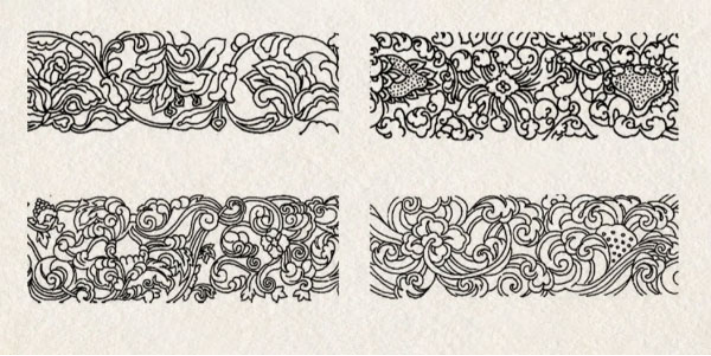
Ⅱ. Origins & Evolution
- Emerging as an evolution of Wei-Jin period honeysuckle motifs (or possibly from earlier cloud-algae patterns), the Scroll Grass Pattern rose to prominence during the Tang dynasty (618-907 CE), solidifying its status as a cornerstone of Chinese ornamental art.
- The scroll grass pattern evolved from the honeysuckle pattern during the Wei, Jin, and Southern and Northern Dynasties (some also believe it developed from the “cloud – algae pattern”). It became widely popular in the Tang Dynasty and later officially became an important part of traditional Chinese decorative patterns.
- In the Tang Dynasty, the The scroll grass pattern mainly featured rich and magnificent flowers. The flower shapes were full, the veins were spiraling, and the forms were complex, gorgeous, and full of vitality, reflecting the magnificent and luxurious craftsmanship style of the Tang Dynasty as well as the vibrant and energetic zeitgeist.

- In the Song Dynasty, the decoration advocated elegance and simplicity, and less use was made of complex and colorful decorative patterns. Therefore, the scroll grass pattern during this period was more reserved and refined, with plain colors and delicate shapes.
- After the Yuan Dynasty, the scroll grass pattern was widely applied to ceramics, and on this basis, the twining – vine pattern and the curling – leaf pattern gradually evolved.
- In the Ming Dynasty, while inheriting the traditional, the scroll grass pattern enriched its expressive elements and refined its expressive techniques. It also absorbed and carried forward the essence of foreign Islamic patterns, presenting a brand – new look with distinct characteristics and styles of the times.
- In the Qing Dynasty, under the aesthetic trend that valued complexity and luxury, the scroll grass pattern became more elaborate and gorgeous, with slender stems and leaves, and exquisitely beautiful flower petals.
- From ancient times to the present, the scroll grass pattern has occupied an important position in decorative arts, reflecting the cultural inheritance and exchanges of different eras and possessing unique artistic expressions.
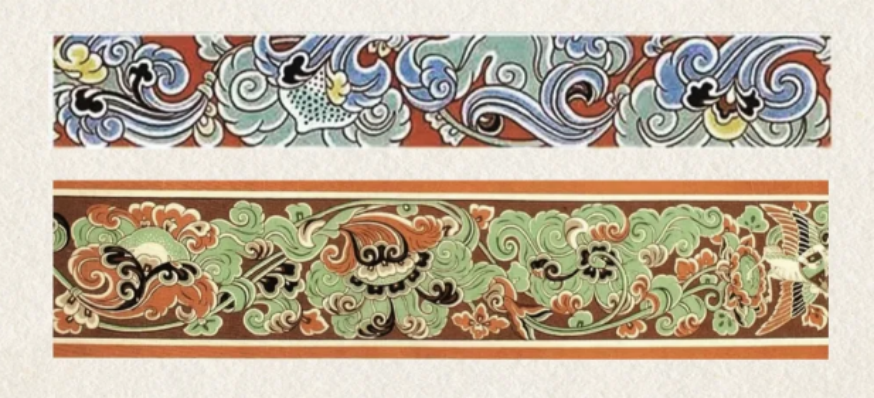
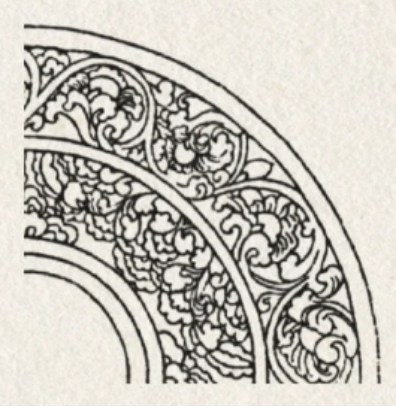
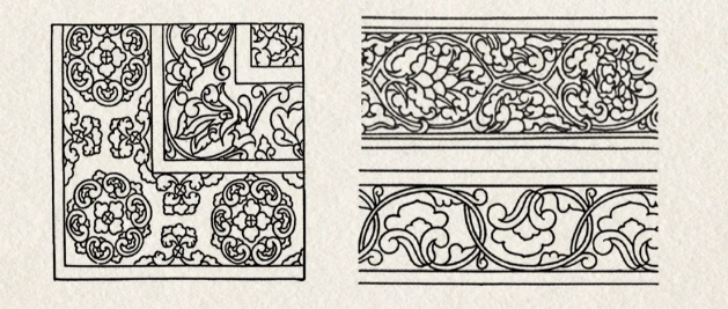
Ⅲ. Stylistic Features
The Scroll Grass Pattern is a ribbon – like composite pattern that represents natural forms. It consists of an “S” – shaped wavy curve connected to “C” – shaped short lines to form the main stem, among which various interwoven flowers, branches, leaves, or other decorative patterns are interspersed. It unfolds in the form of a two – way continuous or four – way continuous pattern. This wavy curve, full of changes and a sense of movement, creates a continuous, undulating rhythm that seems endless, producing an artistic effect of continuousness and eternal rebirth, allowing people to feel the endless vitality in Chinese apparel. Apart from the characteristic of the continuous wavy framework, its typical feature lies in the “curl” of the flower and leaf shapes. For example, the front – side, inner – outer curls of the flower and leaf, and the undulating curves of their outlines. The curling and stretching of the leaves are natural and smooth, highly rhythmic, and they extend in all four directions in the forms of symmetry, balance, and repetition.
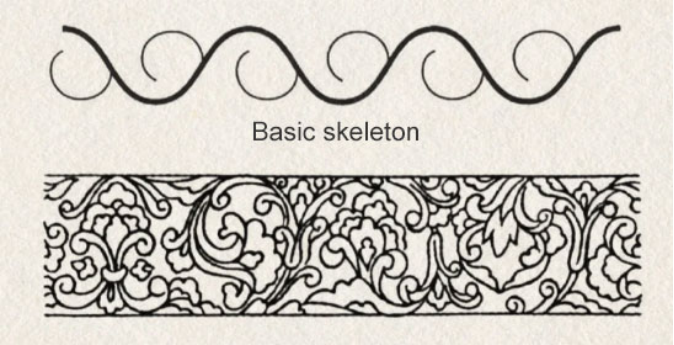
Ⅳ. Applications of the Scroll Grass Pattern in Daily Life
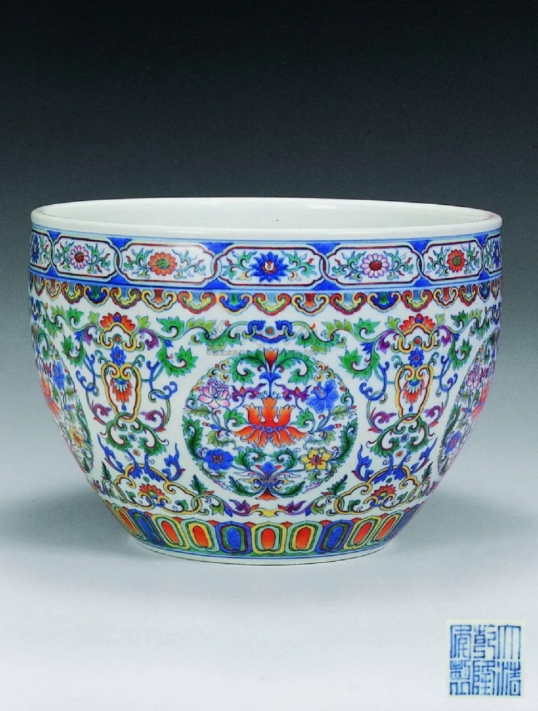
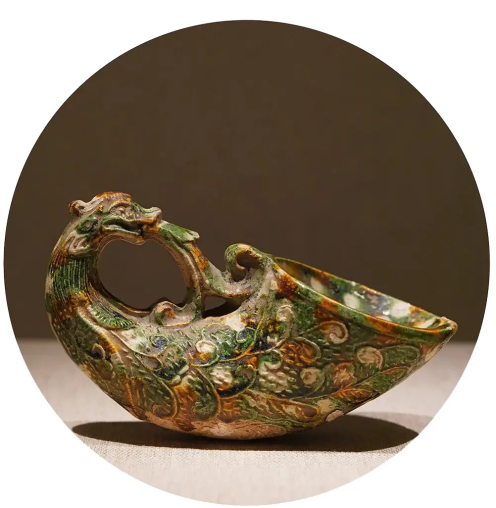
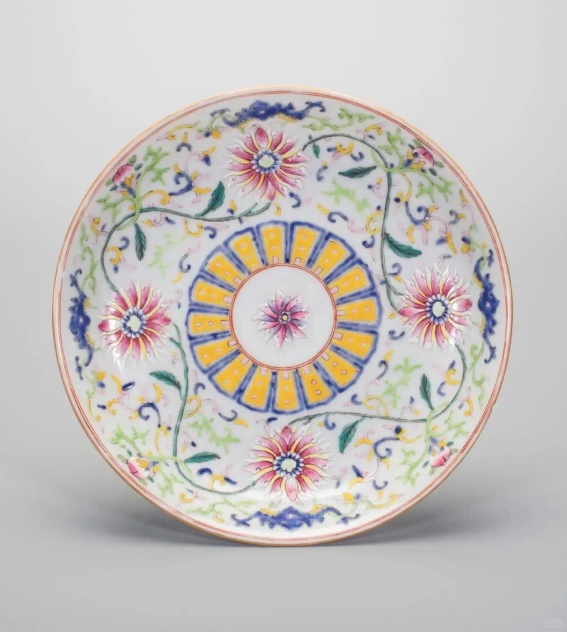
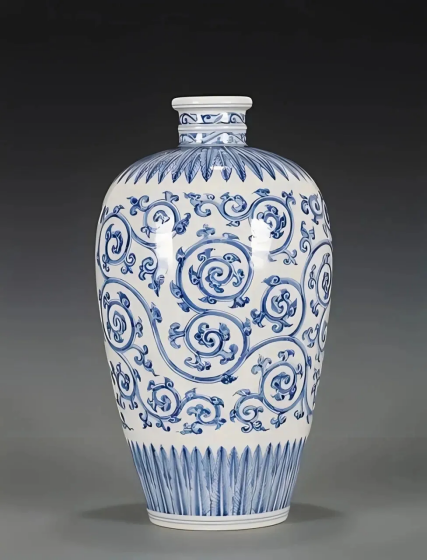
Apart from the daily utensils mentioned above, in the murals of Fahai Temple, such as the clothing of the figures shown in the picture below, there are also many forms of the Scroll Grass Pattern on Hanfu.
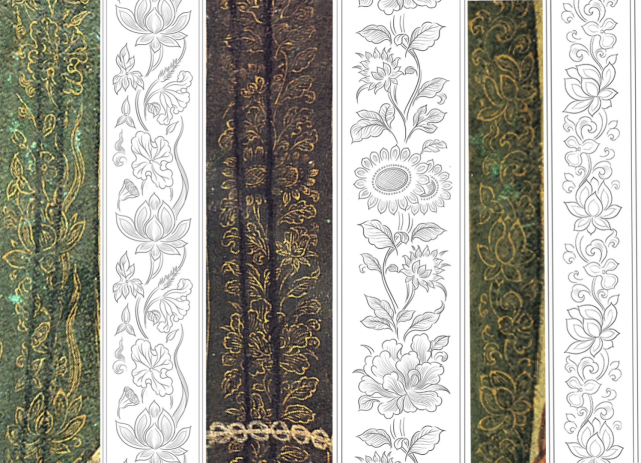
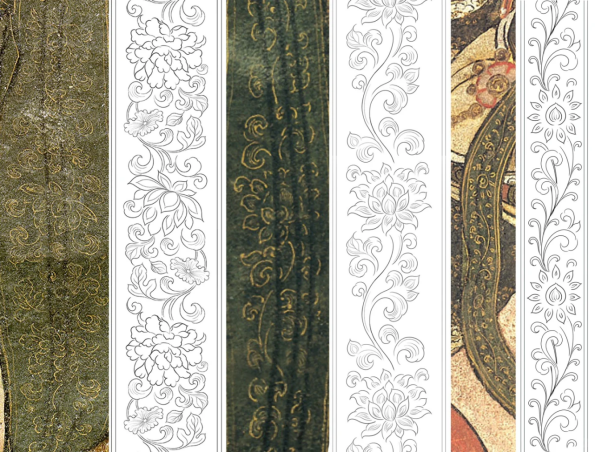
Ⅴ. Cultural Symbolism of the Scroll Grass Pattern
The ever – flowing Scroll Grass Pattern not only implies the principles of the co – existence of being and non – being, and the relativity of length and shortness in traditional Chinese Taoist culture. It vividly and aptly expresses the harmonious symbiotic relationship between humanity and nature. Meanwhile, it is also related to the Buddhist concept of the cycle of life.
Moreover, when combined with different themes, the Scroll Grass Pattern takes on diverse meanings. The overall pattern integrates with the auspicious implications of the themes themselves. This not only reflects the inherent connotations of the Scroll Grass Pattern but also incorporates the unique cultural meanings of different themes, mirroring the core features of Chinese traditional culture: all – inclusiveness while staying true to its essence.
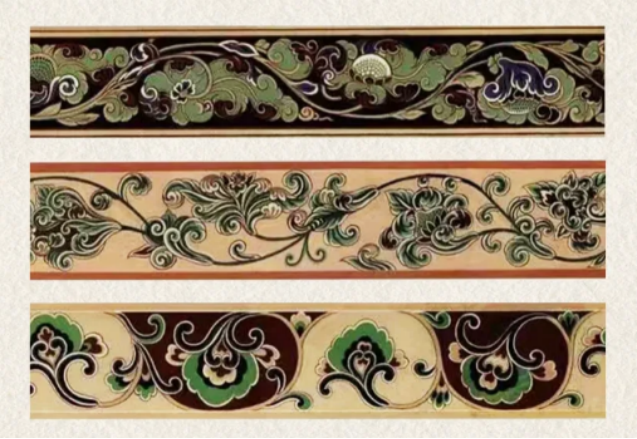
Ⅵ. A Modern Redefinition
In the 3D world of Xiaohongshu blogger 索非的3D世界, there’s an interesting 3D – printing experiment. It reinterprets the Scroll Grass Pattern with new materials, breathing new life into this ancient pattern.
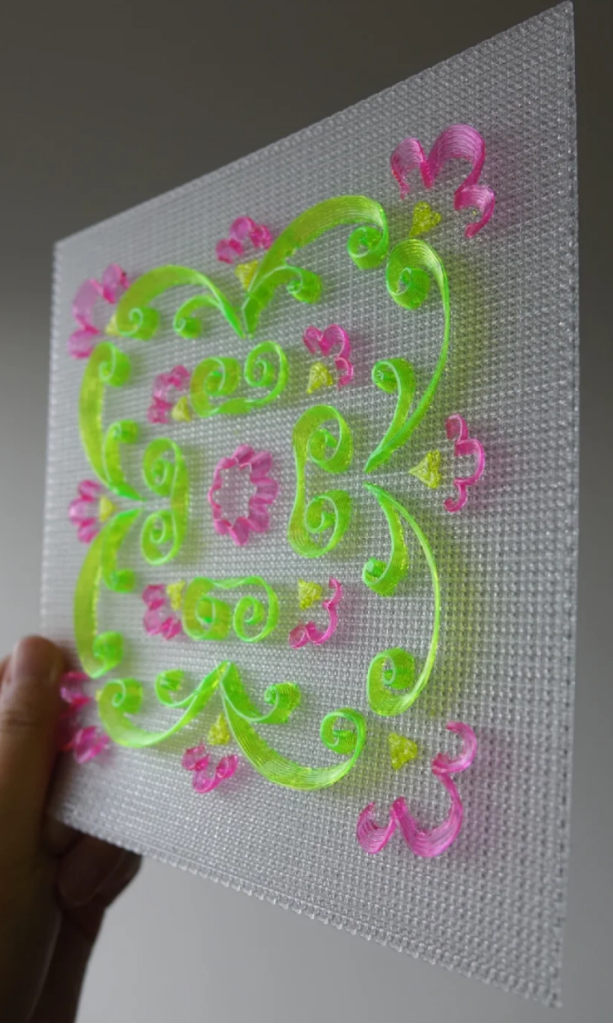
Ⅶ. Conclusion
In the vast landscape of Hanfu culture, the Scroll Grass Pattern is like a vivid thread that runs through the ages, connecting the aesthetic interests of the past and the present. It’s not just a decorative pattern but a symbol carrying profound cultural connotations and the national spirit.
Looking ahead to future Hanfu designs, the Scroll Grass Pattern will have even broader room for innovation. With the continuous advancement of technology, digital design and 3D printing will bring more possibilities for presenting this pattern. Designers can use these technologies to freely distort and recombine it, creating unprecedented visual effects. Meanwhile, the use of eco – friendly materials will complement the natural and flexible charm of the Scroll Grass Pattern, injecting the concept of green design into Hanfu.
As a gem of Hanfu culture, the Scroll Grass Pattern has played, is playing, and will play an important role. It will continue to be passed down and innovated in Hanfu design, serving as a cultural bridge between the traditional and the modern, the East and the West, promoting the continuous development of Hanfu culture and writing an even more magnificent chapter.
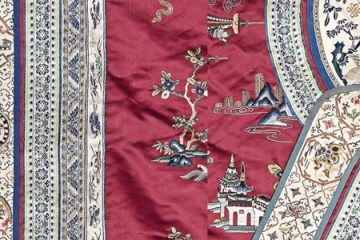
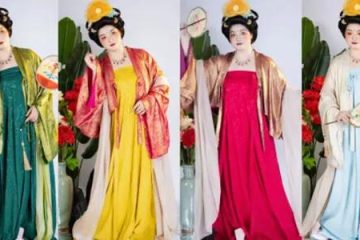
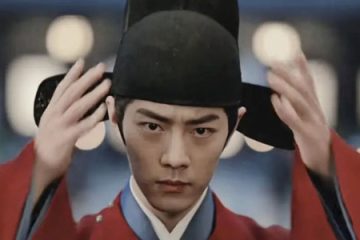
0 Comments